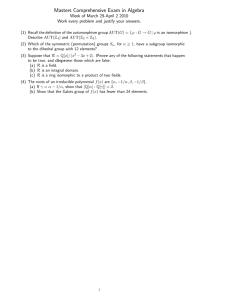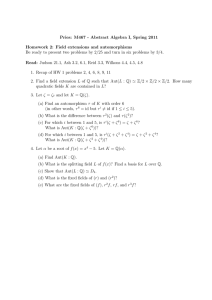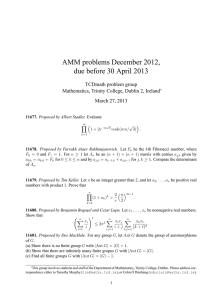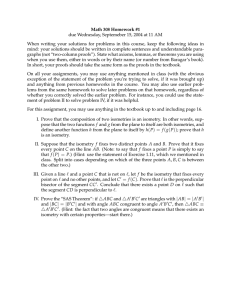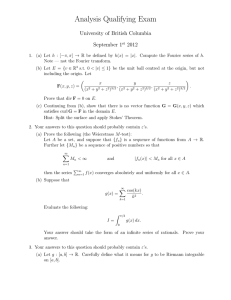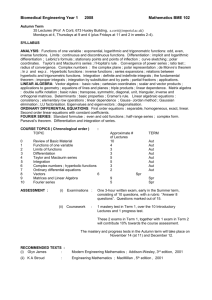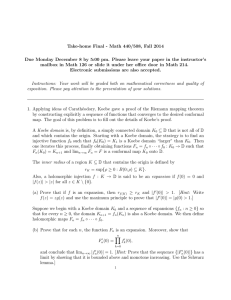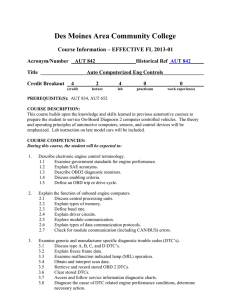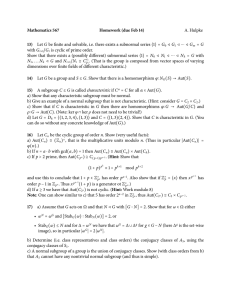Homework 6: The Uniformization Theorem
advertisement
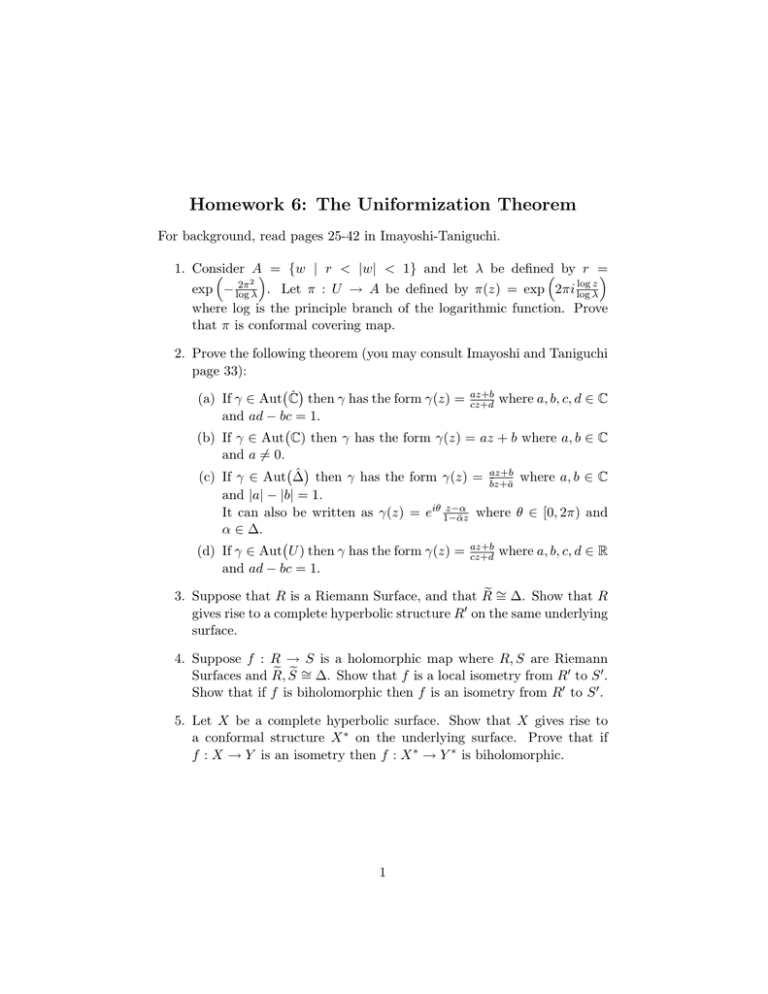
Homework 6: The Uniformization Theorem
For background, read pages 25-42 in Imayoshi-Taniguchi.
1. Consider
A = {w | r < |w| < 1} and let λ be defined
by r =
log z
2π 2
exp − log λ . Let π : U → A be defined by π(z) = exp 2πi log
λ
where log is the principle branch of the logarithmic function. Prove
that π is conformal covering map.
2. Prove the following theorem (you may consult Imayoshi and Taniguchi
page 33):
(a) If γ ∈ Aut Ĉ then γ has the form γ(z) = az+b
cz+d where a, b, c, d ∈ C
and ad − bc = 1.
(b) If γ ∈ Aut C) then γ has the form γ(z) = az + b where a, b ∈ C
and a 6= 0.
ˆ then γ has the form γ(z) = az+b where a, b ∈ C
(c) If γ ∈ Aut ∆
b̄z+ā
and |a| − |b| = 1.
z−α
It can also be written as γ(z) = eiθ 1−
ᾱz where θ ∈ [0, 2π) and
α ∈ ∆.
(d) If γ ∈ Aut U ) then γ has the form γ(z) =
and ad − bc = 1.
az+b
cz+d
where a, b, c, d ∈ R
∼ ∆. Show that R
e=
3. Suppose that R is a Riemann Surface, and that R
0
gives rise to a complete hyperbolic structure R on the same underlying
surface.
4. Suppose f : R → S is a holomorphic map where R, S are Riemann
e Se ∼
Surfaces and R,
= ∆. Show that f is a local isometry from R0 to S 0 .
Show that if f is biholomorphic then f is an isometry from R0 to S 0 .
5. Let X be a complete hyperbolic surface. Show that X gives rise to
a conformal structure X ∗ on the underlying surface. Prove that if
f : X → Y is an isometry then f : X ∗ → Y ∗ is biholomorphic.
1
